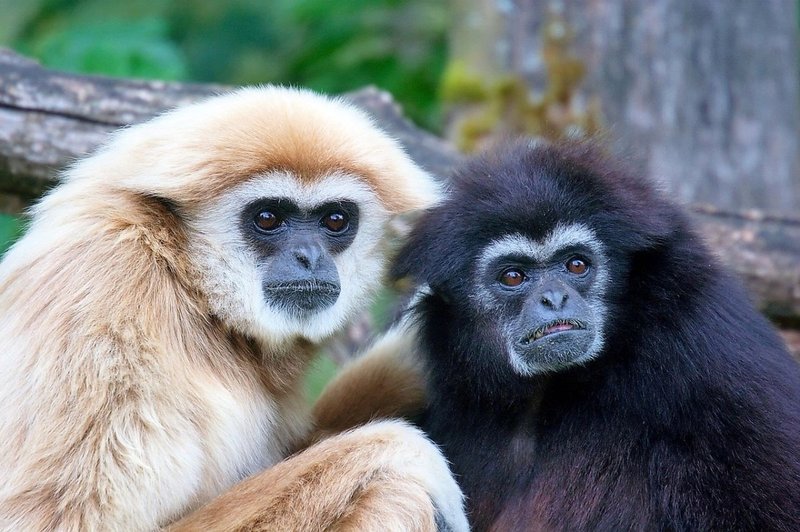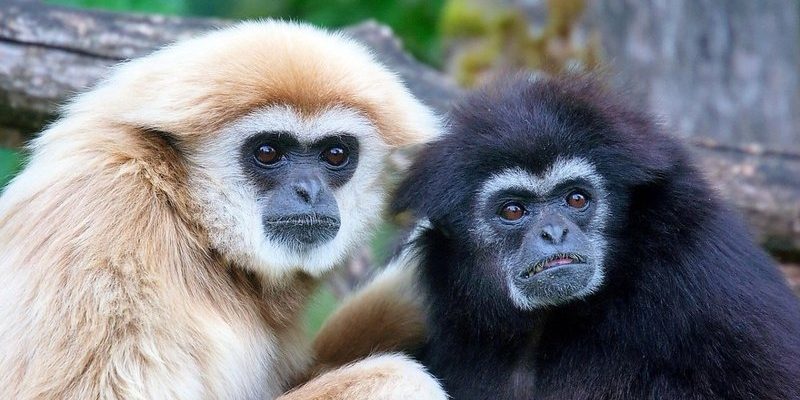
Gibbons primarily inhabit tropical and subtropical forests across Southeast Asia, but they don’t always get to choose the most hospitable spots. From steep mountains to dense jungles, they face challenges that would leave most creatures in a panic. So how do these agile primates make the best of their situation? Let’s dive into the world of gibbons and explore their unique adaptations and strategies for survival.
Unique Physical Adaptations
Gibbons are often called “the acrobats of the jungle,” and for good reason. Their long arms and lightweight bodies are perfectly designed for swinging through trees. This form of movement is known as brachiation. Here’s the thing: it’s not just an impressive party trick. Brachiation allows gibbons to cover a lot of ground quickly while staying high above potential threats on the forest floor.
Long arms provide gibbons with a greater reach, enabling them to swing from branch to branch without needing to climb down. This keeps them out of reach of ground predators like snakes and large cats. Plus, their hands are specially adapted for this lifestyle, with a strong grip that helps them hang onto branches with ease.
But there’s more! Gibbons also have excellent vision, which is crucial for spotting food and dangers from afar. Their sharp eyesight allows them to identify ripe fruits or alert them to lurking predators, making them quick decision-makers in tricky situations.
Food Sources and Diet Flexibility
Gibbons primarily feed on fruits, leaves, and flowers, but their menu isn’t set in stone. They’re known as frugivores, which means fruit is their mainstay. However, when their preferred foods are scarce, they adapt their diet. You might be wondering how they manage to thrive when the snack options are limited.
During times of food scarcity, gibbons turn to other resources like nuts, seeds, or even insects. This flexibility is vital for survival. For instance, when fruit is out of season in the dense tropical forest, a gibbon might snack on young leaves or find a hive of insects to munch on. It’s like being at a buffet that sometimes runs out of your favorite dishes; you have to be willing to try something new!
Additionally, gibbons have a social structure that helps them find food. Living in small family groups allows them to share information about food sources. When one finds a good patch of fruit, others in the group can follow, increasing their chances of a hearty meal.
Communication and Cooperation
You might think of gibbons as solitary creatures, but they actually have a complex social life. They communicate loudly and often. Their sweet songs, which can be heard miles away, are a crucial part of their survival strategy. These vocalizations serve multiple purposes—marking territory, attracting mates, and even coordinating movements within their groups.
When faced with threats, gibbons rely on their family unit to watch each other’s backs. For example, while one gibbon keeps lookout for predators, others can focus on finding food. This cooperative behavior enhances their survival chances, especially in dangerous habitats where threats can come from all directions.
Also, their vocal skills help to keep family groups tight-knit. By singing to each other, they strengthen bonds and ensure everyone stays on the same page. It’s a bit like a family dinner where everyone shares stories about their day—except in the gibbon world, it’s all about food and safety!
Adaptations to Climate and Habitat
Living in tropical forests means gibbons face the harsh realities of extreme weather conditions, including heavy rain and intense heat. They’ve adapted to these challenges in some clever ways. For instance, gibbons tend to stay high in the canopy during rainstorms, where they’re less likely to get drenched. It’s like having a natural umbrella that keeps them dry and safe.
Moreover, gibbons are very selective about the trees they choose to inhabit. They prefer trees that provide ample food and shelter. This strategic selection helps them avoid areas where they may be exposed to harsh winds or flooding. When living in mountainous regions, they might opt for trees with sturdy branches that can withstand heavy rainfall, ensuring they have a stable place to swing and rest.
In addition to tree selection, gibbons have shown an incredible ability to adapt their behaviors according to the season. During the hot seasons, they may be more active during cooler parts of the day, such as early morning or late afternoon, which helps them stay comfortable while searching for food.
Conservation Challenges and Human Impact
While gibbons have some remarkable survival strategies, they aren’t immune to the dangers posed by human activity. Deforestation, habitat destruction, and poaching have significantly impacted their populations. The loss of their natural habitats forces them into smaller, fragmented areas, making it harder for them to find food and mates.
Here’s the thing: when gibbons lose their trees, they lose their way of life. Not only do they struggle to find food, but they also face an increased risk from predators. The resulting stress can lead to lower reproductive success, further endangering their species.
Conservation efforts are essential to help protect gibbons and their habitats. Organizations around the world are dedicated to preserving forests and educating communities about the importance of these primates. By raising awareness, we can hopefully turn the tide in favor of gibbons and ensure they continue to thrive in harsh environments.
The Role of Gibbons in Ecosystems
Gibbons play a crucial role in the ecosystems they inhabit. As they travel through the treetops, they help to spread seeds, contributing to forest regeneration. This process is vital for maintaining healthy forests and biodiversity. In other words, gibbons aren’t just surviving; they’re helping the environment thrive, too!
Their role as seed dispersers supports new plant growth, which, in turn, provides food and shelter for various other animals. When gibbons consume fruits and move through their habitats, they effectively act as little gardeners of the forest.
By understanding this relationship, we see the bigger picture of why protecting gibbons is so important. When their survival is threatened, it doesn’t just impact them; it puts the entire ecosystem at risk. This interconnectedness reminds us of our responsibility to preserve not only gibbons but the diverse life forms that share their environment.
Gibbons are truly remarkable creatures, showcasing incredible adaptations to survive in harsh environments. From their physical traits to their social structures, they’ve developed a lifestyle that allows them to thrive despite the challenges they face. However, their future hangs in the balance as human activity poses significant threats to their survival.
The good news is that awareness and conservation efforts can make a difference. By protecting their habitats and promoting sustainable practices, we can ensure that gibbons continue to swing and sing in the forests of Southeast Asia. So next time you think of gibbons, remember their resilience and the vital role they play in our world. Together, we can help secure a future where these amazing primates thrive in harmony with their environment.

